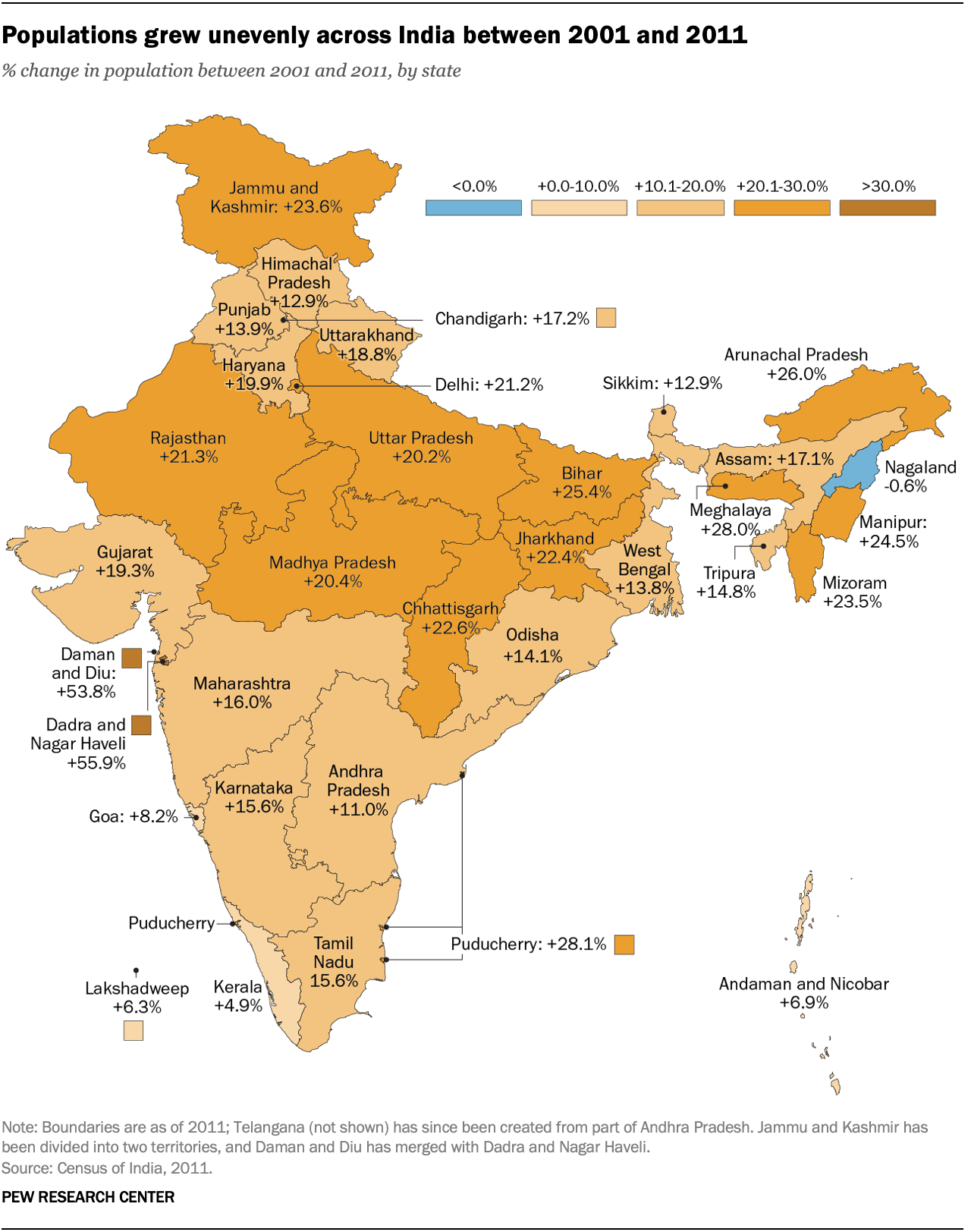California's Growing Population: The Role Of Immigration

Table of Contents
The Magnitude of Immigration's Contribution to California's Population Growth
California's population growth story is inextricably linked to immigration. Analyzing this contribution requires understanding both historical trends and current immigration patterns.
Historical Context: Waves of Immigration Shaping California
California's history is punctuated by significant waves of immigration, each leaving an indelible mark on the state's identity.
- Gold Rush Era (1849-1859): This period witnessed a massive influx of immigrants from across the globe, primarily seeking fortune in the goldfields. This laid the foundation for California's diverse population.
- Post-World War II: Following WWII, significant immigration from Mexico and other parts of the world contributed to California's burgeoning population.
- Late 20th and Early 21st Centuries: Continued immigration from Asia, Latin America, and other regions has shaped the state's demographic makeup, making it one of the most diverse in the nation.
Historically and currently, significant immigrant groups have included Mexicans, Filipinos, Chinese, and Indians. According to the US Census Bureau, immigrants have consistently comprised a substantial portion of California's population growth, often exceeding natural population increase. Precise figures vary depending on the period and methodology, but the contribution is undeniable.
Current Immigration Patterns: A Diverse Influx
Understanding current immigration to California requires differentiating between legal and undocumented immigration.
- Legal Immigration: This includes immigrants who enter the country through various visa programs, such as family-based visas, employment-based visas, and refugee/asylum programs.
- Undocumented Immigration: This involves individuals who enter the country without authorization or who overstay their visas. Determining precise numbers is challenging, but estimates from organizations like the Pew Research Center offer valuable insights.
The geographic distribution of immigrants within California is not uniform. Major urban areas like Los Angeles, San Francisco, and San Jose have historically attracted larger immigrant populations, although significant immigrant communities exist throughout the state. The diversity of immigrant origins continues to enrich California's cultural fabric.
Economic Impacts of Immigration on California
Immigration's economic impact on California is multifaceted, encompassing both contributions and challenges.
Contribution to the Workforce: Filling Labor Demands
Immigrants play a vital role in filling labor demands across various sectors of California's economy.
- Agriculture: The agricultural industry heavily relies on immigrant labor for harvesting and processing crops.
- Hospitality: Restaurants, hotels, and tourism-related businesses frequently employ immigrant workers.
- Technology: The tech industry also benefits from the skills and expertise of immigrant workers.
Immigrants often possess diverse skill sets and education levels, contributing to California's economic productivity. Studies consistently show a positive correlation between immigration and economic growth, with immigrants contributing significantly to the state's GDP and job creation. While some concerns exist about potential wage impacts in certain sectors, the overall economic contribution is generally viewed as positive.
Tax Revenue and Government Spending: A Fiscal Analysis
Analyzing the fiscal impact of immigration requires considering both tax contributions and the costs associated with providing social services.
- Tax Payments: Immigrants pay taxes, contributing to federal, state, and local government revenues.
- Utilization of Public Services: Immigrants, like other residents, utilize public services such as schools and healthcare.
Numerous academic studies have examined the net fiscal contribution of immigrants in California. While initial costs associated with providing social services exist, the long-term tax revenue generated by immigrants often exceeds these costs, resulting in a positive net contribution to the state's budget.
Social and Cultural Impacts of Immigration on California
Immigration profoundly shapes California's social and cultural landscape, leading to both enrichment and challenges.
Cultural Enrichment: A Tapestry of Traditions
Immigration has enriched California's cultural landscape with a vibrant tapestry of traditions, languages, and artistic expressions.
- Cuisine: California's diverse culinary scene reflects the contributions of immigrant communities, offering a rich array of flavors and dining experiences.
- Arts: Immigrant artists have significantly contributed to California's vibrant arts scene, adding unique perspectives and enriching cultural expressions.
- Language: The presence of multiple languages reflects California's multicultural identity and fosters communication and understanding across different communities.
The contributions of immigrant communities to California's cultural dynamism are undeniable. This diversity is a source of strength and innovation for the state.
Challenges and Integration: Fostering Social Cohesion
While immigration offers significant benefits, challenges related to integration persist.
- Language Barriers: Language differences can create obstacles to accessing education, employment, and healthcare services.
- Cultural Adaptation: Adjusting to a new culture and navigating societal norms can be challenging for immigrants.
- Social Tensions: Differences in cultural values and beliefs can sometimes lead to social tensions.
Addressing these challenges requires collaborative efforts from government agencies, community organizations, and individuals. Successful integration strategies include language assistance programs, cultural awareness initiatives, and policies that promote inclusivity and social cohesion. Open dialogue and mutual understanding are key to navigating potential conflicts and fostering a more unified and equitable society.
Conclusion: Understanding California's Growth Trajectory
California's growing population is significantly shaped by immigration. This article has highlighted the significant contributions of immigrants to the state's economy, workforce, and cultural richness. While challenges related to integration exist, understanding both the contributions and challenges is vital for creating effective policies that support both immigrants and native-born Californians. The future of California's population growth and its overall prosperity depends on fostering an inclusive environment that maximizes the benefits of immigration while mitigating potential challenges. Further research and ongoing dialogue on the complex topic of California Population Growth and the crucial role of Immigration in California are necessary to ensure a thriving future for the state. We encourage readers to explore resources from the US Census Bureau, the Pew Research Center, and other relevant organizations to deepen their understanding of this dynamic issue and engage in informed discussions about immigration policies and their impact on California’s future.

Featured Posts
-
 Trumps Address To Joint Session Of Congress How To Watch Live
May 27, 2025
Trumps Address To Joint Session Of Congress How To Watch Live
May 27, 2025 -
 Lagarde Ecb Nin Fiyat Istikrari Taahhuedue Ve Gelecek Adimlari
May 27, 2025
Lagarde Ecb Nin Fiyat Istikrari Taahhuedue Ve Gelecek Adimlari
May 27, 2025 -
 Dylan Efron Truth Behind The Efron Brothers Rivalry
May 27, 2025
Dylan Efron Truth Behind The Efron Brothers Rivalry
May 27, 2025 -
 Impact Of The Gop Bills 230 Billion Reduction In Food Assistance
May 27, 2025
Impact Of The Gop Bills 230 Billion Reduction In Food Assistance
May 27, 2025 -
 Zaderzhka Postavok Patriot Obyasnenie Ministerstva Oborony Germanii
May 27, 2025
Zaderzhka Postavok Patriot Obyasnenie Ministerstva Oborony Germanii
May 27, 2025
